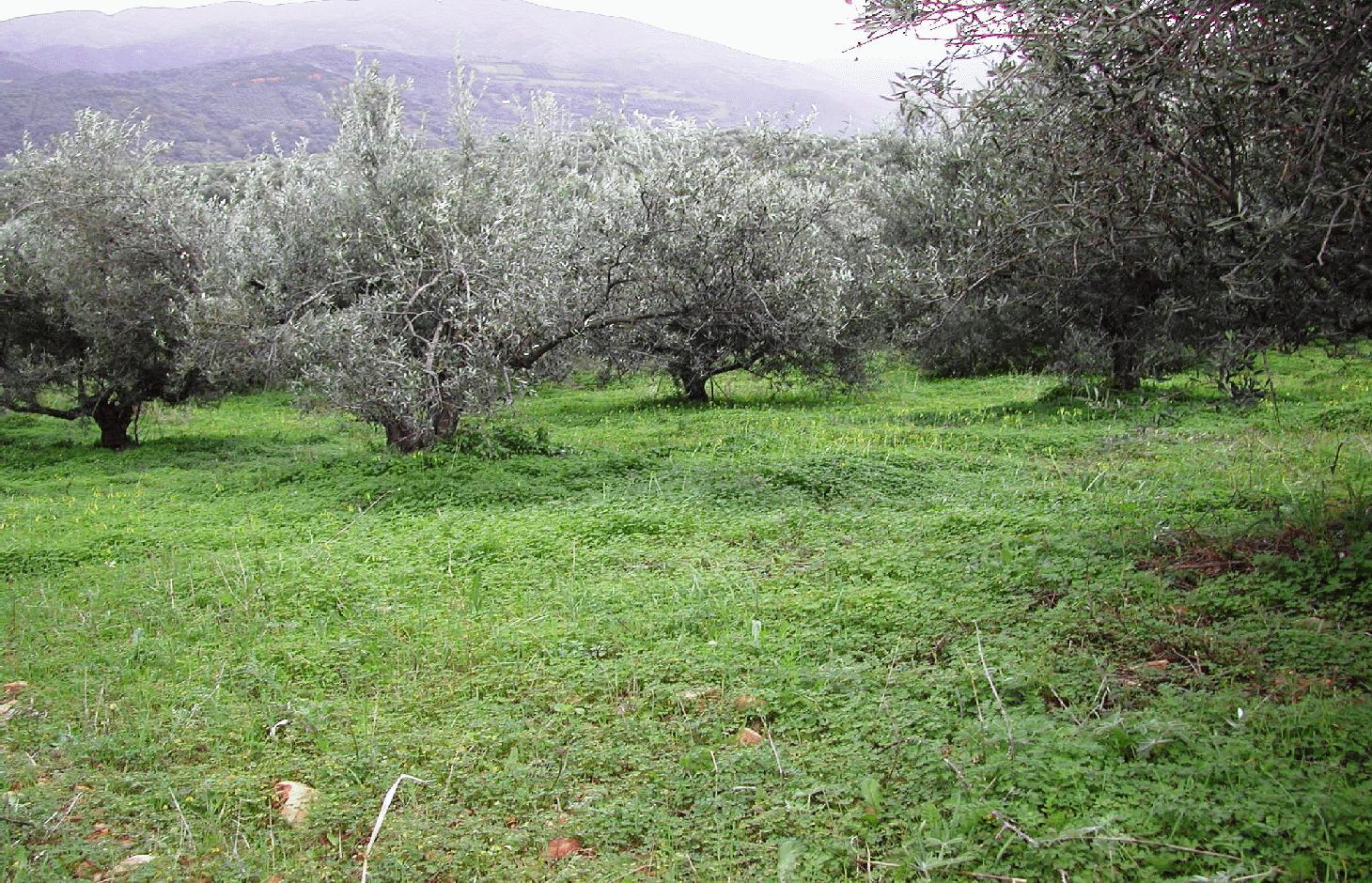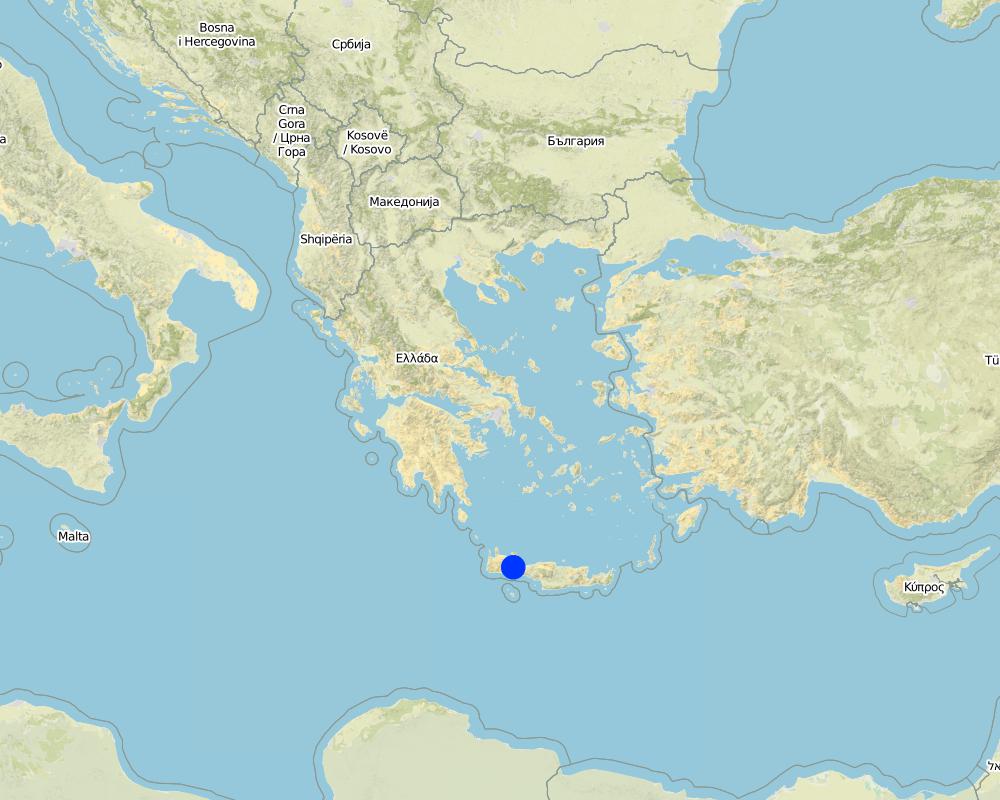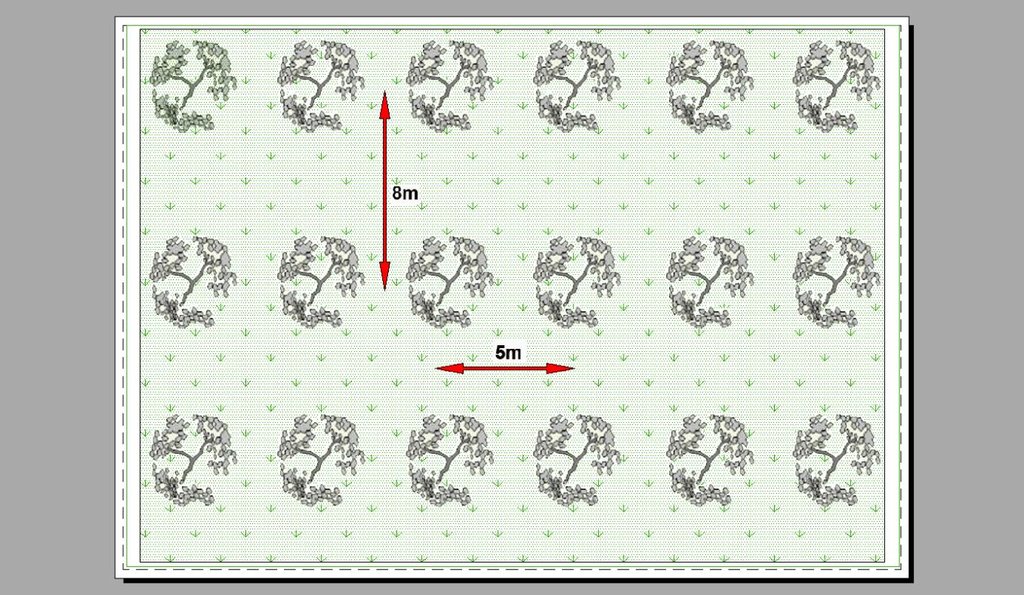Olive groves under no-tillage operations [希腊]
- 创建:
- 更新:
- 编制者: Costas Kosmas
- 编辑者: –
- 审查者: Deborah Niggli, Alexandra Gavilano
Ακαλλιέργεια (Greek)
technologies_1035 - 希腊
查看章节
全部展开 全部收起1. 一般信息
1.2 参与该技术评估和文件编制的资源人员和机构的联系方式
SLM专业人员:
Ioannis Mentzidakis
National Agricultural Research Foundation - NAGREF - Institute for Olive Tree and Subtropical Plants of Chania
希腊
有助于对技术进行记录/评估的项目名称(如相关)
DESIRE (EU-DES!RE)有助于对技术进行记录/评估的机构名称(如相关)
Agricultural University of Athens (AUA) - 希腊有助于对技术进行记录/评估的机构名称(如相关)
National Agricultural Research Foundation (NAGREF) - 希腊1.3 关于使用通过WOCAT记录的数据的条件
编制者和关键资源人员接受有关使用通过WOCAT记录数据的条件。:
是
1.5 参考关于SLM方法(使用WOCAT记录的SLM方法)的调查问卷
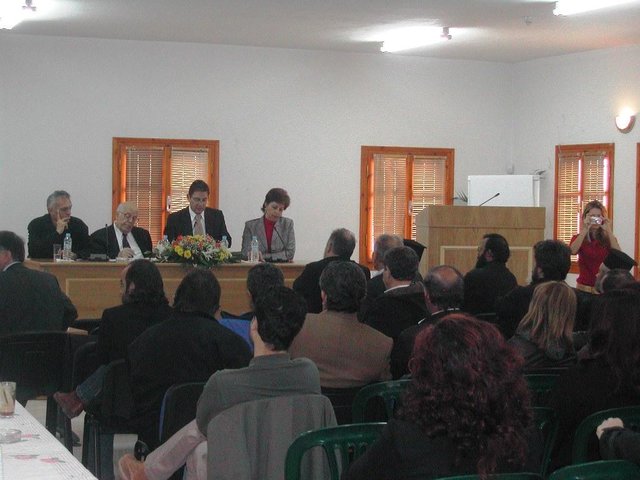
Sustainable development of olive groves I [希腊]
Sustainable development of olive groves by applying no tillage operations
- 编制者: Costas Kosmas
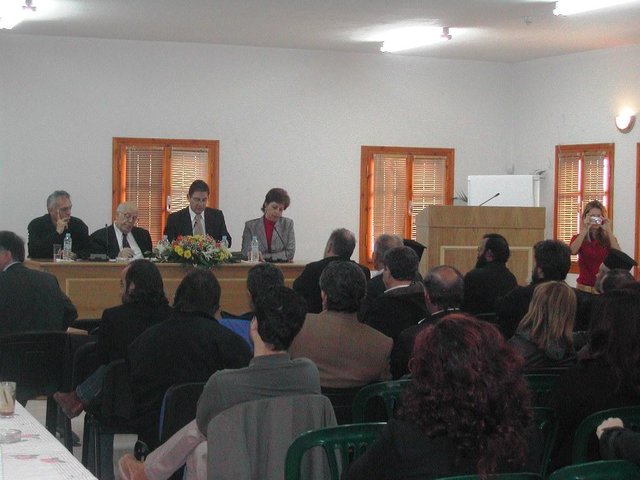
Sustainable development of olive groves II [希腊]
Sustainable development of olive groves by applying no tillage operations and plastic nets on the soil surface
- 编制者: Costas Kosmas
2. SLM技术的说明
2.1 技术简介
技术定义:
Olive groves under no tillage and no herbicide application.
2.2 技术的详细说明
说明:
Sustainable farming may include several measures for protecting natural resources. One measure, that of no-tillage, relates to reduced soil erosion. This may have favourable effects on soil aggregation and protection from soil crusting and soil erosion. In a no-tillage system, the residues are concentrated on the surface of the soil, which enhances aggregate stability and protects the soil from erosion.
Purpose of the Technology: Sustainable farming may include several measures for protecting natural resources. One of the applied measures in the context of sustainable farming, related to reduction of soil erosion, is minimum tillage or no tillage operations. No tillage may have favourable effects on soil aggregation and protection of soil crusting and soil erosion. Maximum soil degradation occurs when soil is tilled with a mouldboard plough, followed by disking. In no-tillage system, the residues are concentrated on the surface of the soil enhancing aggregate stability and protecting the soil from erosion.There is no any extra cost for application of the Technology. In the opposite, farm income increases since cost production is decreased without any decrease in olive oil production.
Establishment / maintenance activities and inputs: The most frequently used cover crop is Oxalis pescaprae, a species considered as a weed but with a positive effect on soil and water conservation. It is left to grow during winter to improve water infiltration into the soil and to help prevent soil erosion. Owing to its high sensitivity to drought, Oxalis tends to reach wilting point in late spring due to lack of water in the upper soil layer. Disc-ploughing once every four to five years is necessary to destroy the perennial vegetation and incorporate fertilizers and plant residues into the soil. There is no extra cost involved in applying the technology. In fact, farm income increases, since production costs decrease without any reduction in olive oil production.
Natural / human environment: This practice is common locally and was established 30 years ago by the collaboration of national specialists and land users. It has been applied in a variety of natural and human environmental conditions typical of the Mediterranean region.
2.3 技术照片
2.5 已应用该技术的、本评估所涵盖的国家/地区/地点
国家:
希腊
区域/州/省:
Kissamos province
有关地点的进一步说明:
Chania-Crete
注释:
Total area covered by the SLM Technology is 532 km2.
Map
×2.6 实施日期
如果不知道确切的年份,请说明大概的日期:
- 10-50年前
2.7 技术介绍
详细说明该技术是如何引入的:
- 通过土地使用者的创新
3. SLM技术的分类
3.2 应用该技术的当前土地利用类型

农田
- 乔木与灌木的种植
乔木和灌木种植 - 指定作物:
- 橄榄树
- Oxalis pescaprae (flower but invasive)
每年的生长季节数:
- 1
具体说明:
Longest growing period in days: 150Longest growing period from month to month: November to April
注释:
Major land use problems (compiler’s opinion): high soil erosion rates and a decrease in groundwater recharge
Major land use problems (land users’ perception): increasing production costs when the technique is not applied
Livestock is grazing on crop residues
3.4 供水
该技术所应用土地的供水:
- 混合雨水灌溉
3.5 该技术所属的SLM组
- 改良的地面/植被覆盖
- 最小的土壤扰动
- 病虫害综合管理(包括有机农业)
3.6 包含该技术的可持续土地管理措施

农艺措施
- A3:土壤表面处理

管理措施
- M4:活动时间安排的重大变化
注释:
Main measures: agronomic measures
Secondary measures: management measures
Type of agronomic measures: retaining more vegetation cover, mulching, mineral (inorganic) fertilizers, zero tillage / no-till
3.7 该技术强调的主要土地退化类型

土壤水蚀
- Wt:表土流失/地表侵蚀
注释:
Main type of degradation addressed: Wt: loss of topsoil / surface erosion
Main causes of degradation: soil management (displacement of soil by ploughing)
Secondary causes of degradation: labour availability
3.8 防止、减少或恢复土地退化
具体数量名该技术与土地退化有关的目标:
- 减少土地退化
注释:
Main goals: mitigation / reduction of land degradation
4. 技术规范、实施活动、投入和成本
4.1 该技术的技术图纸
技术规范(与技术图纸相关):
Olive groves occur widely throughout Crete (Greece). One of the main cultivation practices adopted recently is minimum or no tillage. Under this land management practice, weeds are allowed to grow, covering and protecting the soil surface from raindrop impact. The most widely distributed weed is Oxalis pescaprae, a plant species that has positive effects on soil and water conservation. Oxalis grows during winter improving water infiltration into the soil and helping to prevent soil erosion. Owing to its high sensitivity to drought, Oxalis reaches wilting point during late spring due to a lack of soil water in the upper soil layer. The plant is indigenous to South Africa and highly invasive. The plant has a reputation for being very difficult to eradicate once it has become established. Olive trees, planted close together, partially prevent the growth of understorey vegetation. In the Crete study area, rows of olive trees are spaced at intervals of 8 m and trees are planted 5 m apart in the rows
Location: Voukolies. Chania
Technical knowledge required for field staff / advisors: moderate
Technical knowledge required for land users: low
Main technical functions: control of dispersed runoff: retain / trap
Secondary technical functions: increase of surface roughness
Mulching
Material/ species: oxalis sp
作者:
C. Kosmas
4.3 技术建立活动
| 活动 | 时间(季度) | |
|---|---|---|
| 1. | Removal of weeds if they interfere significantly with the collection of the olive crop |
4.4 技术建立所需要的费用和投入
注释:
Duration of establishment phase: 5 month(s)
4.5 维护/经常性活动
| 活动 | 时间/频率 | |
|---|---|---|
| 1. | no maintenance |
4.6 维护/经常性活动所需要的费用和投入(每年)
注释:
Machinery/ tools: no machinery needed
4.7 影响成本的最重要因素
描述影响成本的最决定性因素:
No factors affect costs since Oxalis grows in the area under natural conditions
5. 自然和人文环境
5.1 气候
年降雨量
- < 250毫米
- 251-500毫米
- 501-750毫米
- 751-1,000毫米
- 1,001-1,500毫米
- 1,501-2,000毫米
- 2,001-3,000毫米
- 3,001-4,000毫米
- > 4,000毫米
农业气候带
- 半干旱
Thermal climate class: temperate
5.2 地形
平均坡度:
- 水平(0-2%)
- 缓降(3-5%)
- 平缓(6-10%)
- 滚坡(11-15%)
- 崎岖(16-30%)
- 陡峭(31-60%)
- 非常陡峭(>60%)
地形:
- 高原/平原
- 山脊
- 山坡
- 山地斜坡
- 麓坡
- 谷底
垂直分布带:
- 0-100 m a.s.l.
- 101-500 m a.s.l.
- 501-1,000 m a.s.l.
- 1,001-1,500 m a.s.l.
- 1,501-2,000 m a.s.l.
- 2,001-2,500 m a.s.l.
- 2,501-3,000 m a.s.l.
- 3,001-4,000 m a.s.l.
- > 4,000 m a.s.l.
5.3 土壤
平均土层深度:
- 非常浅(0-20厘米)
- 浅(21-50厘米)
- 中等深度(51-80厘米)
- 深(81-120厘米)
- 非常深(> 120厘米)
土壤质地(表土):
- 中粒(壤土、粉土)
- 细粒/重质(粘土)
表土有机质:
- 中(1-3%)
- 低(<1%)
5.4 水资源可用性和质量
地下水位表:
> 50米
地表水的可用性:
好
水质(未处理):
良好饮用水
5.5 生物多样性
物种多样性:
- 高
5.6 应用该技术的土地使用者的特征
生产系统的市场定位:
- 混合(生计/商业)
非农收入:
- 低于全部收入的10%
相对财富水平:
- 平均水平
- 丰富
个人或集体:
- 个人/家庭
机械化水平:
- 机械化/电动
性别:
- 男人
说明土地使用者的其他有关特征:
Land users applying the Technology are mainly common / average land users
Population density: 10-50 persons/km2
Annual population growth: 1% - 2%
75% of the land users are average wealthy and own 90% of the land.
5.7 应用该技术的土地使用者使用的平均土地面积
- < 0.5 公顷
- 0.5-1 公顷
- 1-2 公顷
- 2-5公顷
- 5-15公顷
- 15-50公顷
- 50-100公顷
- 100-500公顷
- 500-1,000公顷
- 1,000-10,000公顷
- > 10,000公顷
这被认为是小规模、中规模还是大规模的(参照当地实际情况)?:
- 小规模的
5.8 土地所有权、土地使用权和水使用权
土地所有权:
- 公司
- 个人,有命名
土地使用权:
- 自由进入(无组织)
用水权:
- 社区(有组织)
5.9 进入服务和基础设施的通道
健康:
- 贫瘠
- 适度的
- 好
教育:
- 贫瘠
- 适度的
- 好
技术援助:
- 贫瘠
- 适度的
- 好
市场:
- 贫瘠
- 适度的
- 好
道路和交通:
- 贫瘠
- 适度的
- 好
金融服务:
- 贫瘠
- 适度的
- 好
6. 影响和结论性说明
6.1 该技术的现场影响
社会经济效应
生产
土地管理
水资源可用性和质量
灌溉用水需求
收入和成本
农业收入
注释/具体说明:
2200-2500€/ha
其它社会经济效应
Hindered farm operations
社会文化影响
冲突缓解
Improved livelihoods and human well-being
注释/具体说明:
Increase in farmers income and reduction the off-site effects
生态影响
水循环/径流
水量
地表径流
土壤
土壤水分
土壤流失
土壤结壳/密封
土壤压实
6.2 该技术的场外影响已经显现
下游洪水
地下水/河流污染
6.3 技术对渐变气候以及与气候相关的极端情况/灾害的暴露和敏感性(土地使用者认为的极端情况/灾害)
渐变气候
渐变气候
| 季节 | 增加或减少 | 该技术是如何应对的? | |
|---|---|---|---|
| 年温度 | 增加 | 未知 |
气候有关的极端情况(灾害)
气象灾害
| 该技术是如何应对的? | |
|---|---|
| 局地暴雨 | 好 |
| 局地风暴 | 未知 |
气候灾害
| 该技术是如何应对的? | |
|---|---|
| 干旱 | 未知 |
水文灾害
| 该技术是如何应对的? | |
|---|---|
| 比较和缓的(河道)洪水 | 未知 |
其他气候相关的后果
其他气候相关的后果
| 该技术是如何应对的? | |
|---|---|
| 缩短生长期 | 未知 |
| arid climatic conditions | 不好 |
6.4 成本效益分析
技术收益与技术建立成本相比如何(从土地使用者的角度看)?
短期回报:
积极
长期回报:
积极
技术收益与技术维护成本/经常性成本相比如何(从土地使用者的角度看)?
短期回报:
积极
长期回报:
积极
6.5 技术采用
如若可行,进行量化(住户数量和/或覆盖面积):
2650
在所有采用这项技术的人当中,有多少人是自发的,即未获得任何物质奖励/付款?:
- 51-90%
注释:
55% of land user families have adopted the Technology with external material support
1850 land user families have adopted the Technology with external material support
100% of land user families have adopted the Technology without any external material support
800 land user families have adopted the Technology without any external material support
There is a moderate trend towards spontaneous adoption of the Technology
6.7 该技术的优点/长处/机会
| 土地使用者眼中的长处/优势/机会 |
|---|
|
Production costs can be cut, but may create problems for olive harvesting How can they be sustained / enhanced? the necessity to cut weeds during harvesting |
| 编制者或其他关键资源人员认为的长处/优势/机会 |
|---|
|
Technologies for conserving soil and water resources and combating desertification in Crete mainly relate to land management. Olive groves are widespread on the island as a result of the importance of olive oil for everyday cooking. Furthermore, olive groves can survive adverse weather and soil conditions providing a significant income for farmers for a relatively low labour input. Land management practices have been adopted in the area based on tradition and knowledge transfer by local institutes and specialists. No-tillage land management practice with olives can be considered as an important technique to protect against land degradation and desertification and increase farmers’ incomes How can they be sustained / enhanced? education of farmers |
6.8 技术的弱点/缺点/风险及其克服方法
| 土地使用者认为的弱点/缺点/风险 | 如何克服它们? |
|---|---|
| The field is ‘clean’ in readiness for harvesting | the necessity to cut weeds during harvesting |
| 编制者或其他关键资源人员认为的弱点/缺点/风险 | 如何克服它们? |
|---|---|
| A slight decrease in water availability for the growing trees | no solution to this problem |
7. 参考和链接
7.1 信息的方法/来源
链接和模块
全部展开 全部收起链接

Sustainable development of olive groves I [希腊]
Sustainable development of olive groves by applying no tillage operations
- 编制者: Costas Kosmas

Sustainable development of olive groves II [希腊]
Sustainable development of olive groves by applying no tillage operations and plastic nets on the soil surface
- 编制者: Costas Kosmas
模块
无模块


